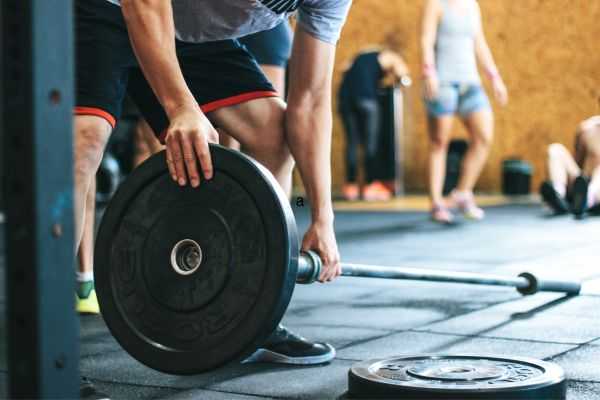We all remember the hardcore training scenes from the movie Rocky IV where Stallone trains in the bitter Russian cold to prepare himself for the match against what seemed like an undefeatable opponent, Evan Drago.
But what was more fascinating, were the heart wrenching training shots taken in heavy snow where Rocky was shown pulling sleds, running in knee high snow, climbing mountains and doing some nerve cracking stunts which pushes all the people to the edge of their seats whenever they watch that sequence.

What looked like an extremely hard training triggered a question in the minds of many people around the world, that whether winters can be a good time to train or if one can use winter to gain muscle mass?
In India the winters typically start in the November month and goes on the Feb and some part of March, December & January being the coldest months.
What is fascinating is that in sports like bodybuilding and physique championships, this is actually the in-season time, where you have to be at your leanest best, for the upcoming competition. The athlete has to cut down to be in the most muscular and ripped form of the year.
On the other hand, the summer months are where they are in off-season, where they aim to gain maximum muscle mass. Notwithstanding this goes against the very concept or belief of gaining mass during the winter months.
Though this is just a common-sense observation to start with, and has nothing to do with science-based logic.
- One of the wrong myths associated with winters is that it’s the best time for gaining and summers are excellent cutting, or losing fat. This myth actually has nothing to do with evidence or logic.
Most people believe that it is because you sweat less in winters, so you can gain mass easily which is the opposite of the false myth that excess sweating leads to weight loss and it is these people who are running with heavy clothes on during summer months on a treadmill with fans off to induce artificial sweating which they consider a sign of a good workout.
They forget the simple fact that sweating is a natural phenomenon of the body, which is used to simply cool down the body, as when the body temperature rises, the brain activates the sweat glands which release sweat from the body pores and when this sweat gets evaporated it also takes away the latent heat from the bodies surface which cools the body down. Inducing artificial sweating does nothing except tiring you early as with sweat you are also losing many salts and minerals.
2. Another myth is that during winter months the physical activity reduces in most cases that is why one gains more weight. This myth is based more on laziness of an individual than seasons itself. Such individuals, will different reasons for not exercising in summers too.
3. A study, found that, total testosterone peaked in the months of October and November, with a smaller peak in February. June levels of total Testosterone were the lowest. Moreover, free testosterone peaked in December and reached a low point in August. The subjects’ waist-to-hip ratio followed the pattern for testosterone, being highest when testosterone was lowest. So, subjects were perhaps leaner during the cold winter months, which, by the way also have the fewest hours of sunlight.
As rightly shown that during winter months due to rise in testosterone levels which is the main muscle building hormone, the muscle mass levels peaked and the fat levels decreased and so did the waist-to-hip ratio. So, the people will be at their leanest at this time, which is contrary to the popular belief that winter is the best time to gain.
4. If we consider the evolutionary point of view then during the days of our ancestor’s winter were the months of hibernation due scarcity in food availability, which is also the case with many animals like the Polar Bear, even today. These animals eat large amount of food during the summer months and store maximum fat and then use this fat for survival during the harsh winters. The same was the case with humans millions of years ago. This led our bodies to become more efficient in storing food as fat during summers and burning it more efficiently as fuel during winters.
Our genes have not changed much since thousands of years and today the case is entirely different. Even with reduced physical activity the humans are easily getting large amount of foods in all seasons. So, during winters where the body is more efficient in burning fat and eat less, we are giving it large number of calories which has the exact opposite effect on his body i.e. increase body fat levels and this is not the reason why you gain weight during winters.
5. There is a type of fat in the body, called as the brown fat, which unlike other fat tissue, burn excess energy rather than storing it as fat. This is exact opposite to the white adipose tissue, the ones which hangs over your belly and arms. The main purpose of this adipose or fat tissue is to regulate body temperature and burn the excess fuel in the cell to release the energy as heat. Babies and small animals rely on brown fat to stay warm. Brown fat is composed of more capillaries than white fat and acts more like muscle tissue, which also burns energy.
A study saw that, individuals with brown fat had lower prevalence of cardiometabolic diseases, and the presence of Brown fat was independently correlated with lower odds of type 2 diabetes, dyslipidaemia, coronary artery disease, cerebrovascular disease, congestive heart failure and hypertension. The beneficial effects of brown fat were more pronounced in individuals with overweight or obesity.
During winters the body has to regulate its temperature, to naturally produce heat. This is done by either shivering or non-shivering thermogenesis activities. Shivering produces heat with contracting muscles causing some of the energy to show up as heat. Non-shivering thermogenesis occurs in brown adipose tissue found in mammals.
When our bodies are exposed to cold air, or low temperatures, our adrenal glands get activated, as it’s a type of stress on the body. Adrenal glands, in response to cold, release the ‘fight or flight’ hormone, adrenaline (epinephrine), which forces your body to shoot up its metabolism, thus burning more fat.
But can this white fat be converted to brown fat? Yes, when rats are exposed to cold temperatures, they can convert white fat deposits to brown fat, which is now called ‘beige fat’.
A study, had 5 healthy men, average age 21 years, reside for 4 months in a clinical research unit. The men engaged in regular activities during the day and then returned to their private room each evening. The temperature of the room was set to 24deg C during the first month, 19deg C the second month, 24deg C again for the third month, and 27deg C the remaining month.
The participants were exposed to the temperature for at least 10 hours each night. They wore standard hospital clothing and had bed sheets only. All meals were provided, with calorie and nutrient content carefully controlled and all consumption monitored.
After a month of exposure to mild cold, the participants had a 42% increase in brown fat volume and a 10% increase in fat metabolic activity. These alterations returned to near baseline during the following month of neutral temperature, and then were completely reversed during the final month of warm exposure.
Another study saw that, even a short term exposure to cold results in significant increase in brown fat activity.
That is also one of the reasons why mountaineers are told to eat more fat during extreme cold as the body loses a lot of fat at higher altitudes and fat is required for insulation from cold.
However, continuous exposure to cold doesn’t mean, continuous burning of brown fat, at the same high rate. As it was seen in a study that, eight young male swimmers who routinely swam in cold weather, followed by sessions in a sauna over a minimum of two years and a control group who did not swim in cold weather or use temperature-specific therapies, the cold weather swimmers were better at adapting to changes in temperature in their environment, i.e. they didn’t really burn the brown fat as thought.
So, contrary to a lot of popular believes winter may not be the time to gain but an excellent time to cut down.



